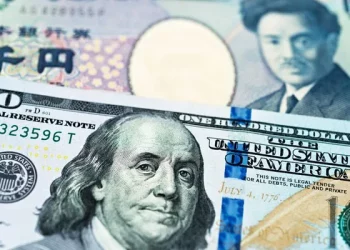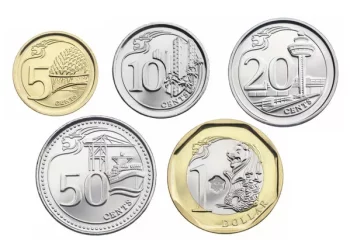In today’s interconnected world, understanding how currency conversion works is essential for both personal and business finance. Whether you’re traveling abroad, investing in foreign markets, or engaging in international trade, knowing how much your money is worth in another currency can have a significant impact on your financial planning. One of the most common currency conversions people often come across is converting US dollars (USD) to Indian rupees (INR), especially considering the global economic prominence of both currencies.
In this article, we will delve into the various factors that influence the conversion of US dollars into Indian rupees, the methods you can use to convert currency, and what you need to consider when dealing with currency exchange rates. Specifically, we will explore how much 400 US dollars (USD) would be worth in Indian rupees (INR), the role of exchange rates, and how fluctuations in these rates can impact both individuals and businesses.
The Basics of Currency Conversion
Currency conversion is the process of exchanging one currency for another, based on the exchange rate. The exchange rate is essentially the value of one currency relative to another. For example, if you are traveling to India from the United States, you would need to convert your US dollars into Indian rupees in order to make transactions.
The exchange rate is determined by various factors, including supply and demand for the currencies, interest rates, inflation rates, economic stability, and geopolitical factors. Understanding how exchange rates fluctuate and what influences them is critical in making informed decisions when converting currency.
What is the Current Exchange Rate Between USD and INR?
The exchange rate between the US dollar (USD) and the Indian rupee (INR) fluctuates continuously based on market conditions. As of the time of writing, the exchange rate stands at approximately 1 USD = 83 INR. However, exchange rates are highly volatile and can change quickly due to factors such as global economic data, interest rate decisions by central banks, inflation, and market speculation.
To give you an idea of how much 400 USD would be worth in INR, using the current exchange rate:
400 USD×83 INR/USD=33,200 INR
So, at an exchange rate of 83 INR per US dollar, 400 USD would be equivalent to 33,200 Indian rupees.
Why Do Exchange Rates Fluctuate?
The value of a currency is not static and can fluctuate based on a wide variety of factors. In the case of the USD/INR currency pair, the following factors play a significant role in determining its value:
1. Interest Rates
Central banks, such as the Federal Reserve in the United States and the Reserve Bank of India (RBI), play a crucial role in determining the value of their respective currencies. The interest rate set by these central banks influences the attractiveness of a currency to investors. Higher interest rates tend to attract foreign investment, which increases demand for the currency and can cause its value to rise. Conversely, lower interest rates can lead to depreciation of a currency.
For example, if the Federal Reserve raises interest rates, the US dollar might strengthen as investors seek higher returns on US assets. Conversely, if the RBI raises interest rates, the Indian rupee may appreciate against the dollar.
2. Economic Indicators
Economic indicators such as GDP growth, unemployment rates, trade balances, and inflation play a crucial role in shaping currency values. A strong economy typically results in a stronger currency because investors are more likely to invest in countries with healthy economic growth. On the other hand, economic instability or a slowdown in growth can lead to depreciation in the currency.
For instance, if India’s economy is performing well, the demand for Indian goods and services increases, which strengthens the rupee. Similarly, if the US economy is robust, the dollar strengthens due to increased investment inflows.
3. Political Stability and Market Sentiment
Geopolitical events and market sentiment can cause significant volatility in currency markets. Political uncertainty, such as elections, government instability, or international conflicts, can lead to fluctuations in the exchange rate. For example, a change in government policies in India or the United States may impact investor confidence in the currency and influence the USD/INR exchange rate.
4. Supply and Demand for the Currency
Like any commodity, the value of a currency is also influenced by supply and demand. If there is an increase in demand for US dollars in the global market, such as when investors are buying US assets or when there is a global crisis, the dollar may appreciate. On the other hand, if there is a decrease in demand, the dollar may depreciate against other currencies like the rupee.
Methods for Converting USD to INR
There are several ways to convert 400 USD to INR, each with its own benefits and drawbacks. Let’s look at the most common methods for currency exchange:
1. Bank and Forex Services
The most traditional way of converting USD to INR is through banks or foreign exchange (forex) services. Banks offer currency exchange services at competitive rates, but they often charge a commission or service fee. Forex services, especially in India, provide currency exchange through various outlets, such as currency exchange counters at airports, hotels, or through online services.
While banks and forex services provide convenience, the exchange rates offered are usually a bit less favorable than the market rate. This is because they include a margin in their rates to cover operational costs and ensure a profit.
2. Online Currency Conversion Platforms
Online platforms such as Wise (formerly TransferWise), Revolut, and PayPal allow users to convert currency at competitive rates with lower fees than traditional banks. These platforms offer real-time exchange rates that closely match the market rate, and the user can initiate the transfer without the need to physically visit a currency exchange service.
Online platforms are also useful for individuals or businesses making regular transactions between the US and India, as they offer a seamless and cost-effective way to convert currency.
3. ATMs and Currency Exchange Kiosks
Another option for converting USD to INR is to use an ATM or currency exchange kiosk, which are commonly available at airports, major city centers, and tourist destinations in India. While convenient, ATM withdrawals and exchanges at kiosks often come with high fees and may not offer the best exchange rates.
4. Currency Conversion through International Transfers
For larger transactions, businesses and individuals may prefer to use international money transfer services such as Western Union or MoneyGram. These services offer a fast and secure way to transfer money across borders, with competitive exchange rates and fees. However, for smaller amounts, these services may not be the most cost-effective solution.
The Impact of Exchange Rate Movements on International Transactions
Understanding exchange rate fluctuations is crucial, especially for businesses or individuals engaged in international trade or investment. A small change in the exchange rate can have a significant impact on the cost of goods and services, as well as the profitability of investments.
1. Business Transactions
For businesses that import or export goods between the US and India, fluctuations in the USD/INR exchange rate can directly affect the cost of doing business. If the Indian rupee strengthens against the dollar, Indian exporters will benefit, as their products will become cheaper for buyers in the US. On the other hand, US companies importing goods from India will face higher costs if the rupee appreciates.
2. Investment Implications
For investors who are looking to diversify their portfolios internationally, currency fluctuations can impact the returns on investments. For example, if you invest in Indian equities and the rupee strengthens against the dollar, the value of your investment will increase when converted back into US dollars. Conversely, if the rupee depreciates, the value of your investment in dollar terms will decrease.
3. Travel and Personal Finance
For individuals who are planning to travel to India, fluctuations in the exchange rate can affect the overall cost of the trip. If the US dollar weakens against the rupee, the cost of travel and accommodations in India will rise. On the other hand, if the dollar strengthens, travel expenses may be lower. Similarly, individuals sending money to relatives in India will benefit from favorable exchange rates, which can make their money go further.
Hedging Against Exchange Rate Risk
For businesses and individuals who are concerned about exchange rate fluctuations, hedging strategies can be employed to reduce the risk of adverse movements in the exchange rate. Hedging can be done through various financial instruments such as forward contracts, options, and currency futures, which lock in an exchange rate for a future date, ensuring that businesses and investors are protected from unfavorable shifts in currency values.
Conclusion
So, how much is 400 US dollars in Indian rupees? At the current exchange rate of approximately 83 INR per USD, 400 dollars would be worth 33,200 rupees. However, this value can fluctuate over time due to changes in economic conditions, interest rates, and other global factors. It is important to stay informed about the factors affecting exchange rates and choose the most appropriate method for currency conversion based on your needs.
Whether you are a traveler, investor, or business owner, understanding the dynamics of currency exchange and exchange rate fluctuations is essential to making informed financial decisions. By keeping track of market trends and exploring various conversion methods, you can ensure that your money goes further when dealing with foreign currencies like the US dollar and the Indian rupee.
In the fast-paced world of forex markets, staying updated on the latest developments can provide you with the knowledge to navigate currency conversion effectively, whether you are exchanging a small amount like 400 USD or making larger international transactions.
Related Topics:



























